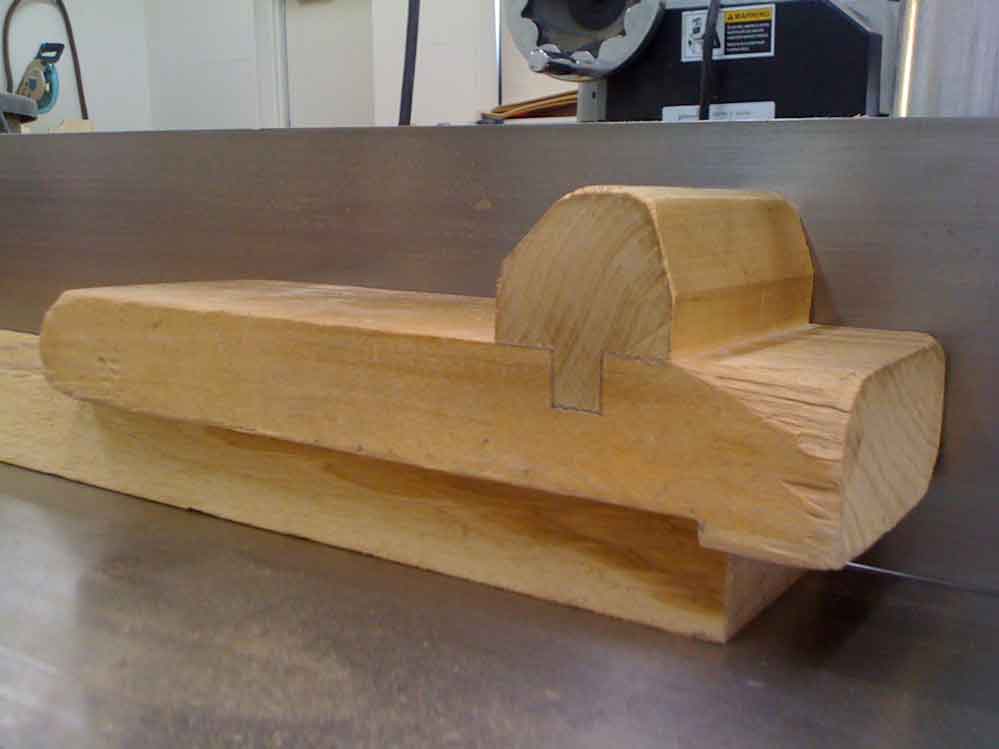The side of the planer that the soap bar starts on is called the infeed table. The side of the planer that the bar ends on is the outfeed table. The annoying wavy divot at the end of the cut is called "snipe". Don't ask me why -- I haven't a clue!

I don't have that particular soap planer, but I've done woodworking and used planers and jointers for years. The methods translate pretty well from wood to soap.
Obviously you have to put some pressure to push the bar into the blade, but you also need to put moderately firm pressure down on the top of the bar at all times. This keeps the soap bar flat against the table. The downward pressure should be about the same amount of force as the sideways pressure.
First, start the bar into the planer blade. All of the downward pressure will obviously be on the infeed table at this point. As soon as the bar gets about halfway through the cut, however, shift where you are pushing down so more of the pressure is on the front third of the bar.
This means during the last half of the cut, ALL downward pressure will be on the soap lying on the outfeed table. Don't put any pressure on the soap that is lying on the infeed table. You may need to experiment with how to place your hand so you get the right amount of downward pressure on the right spot on the bar.
This should reduce the "snipe" at the end of the cut, but may not eliminate it.
To reduce the snipe further, try putting the bar through the cutter at a slight angle, so the cutter blade exits from the soap a little bit at a time, rather than all at once.
ETA: My soap planer takes off a shaving so thin it's translucent -- two passes to clean up the front and back faces remove only 3 grams of soap. If yours is removing a fair bit more than that, then, yeah, the blade may be too high.





